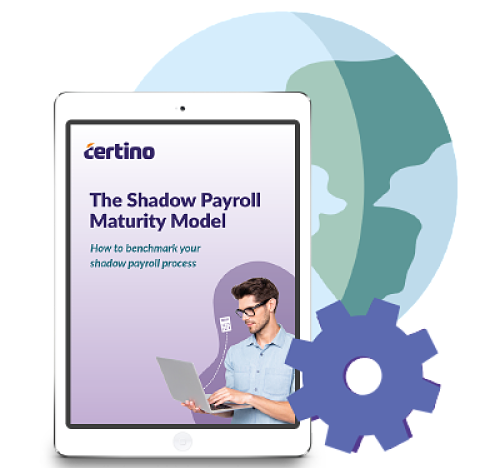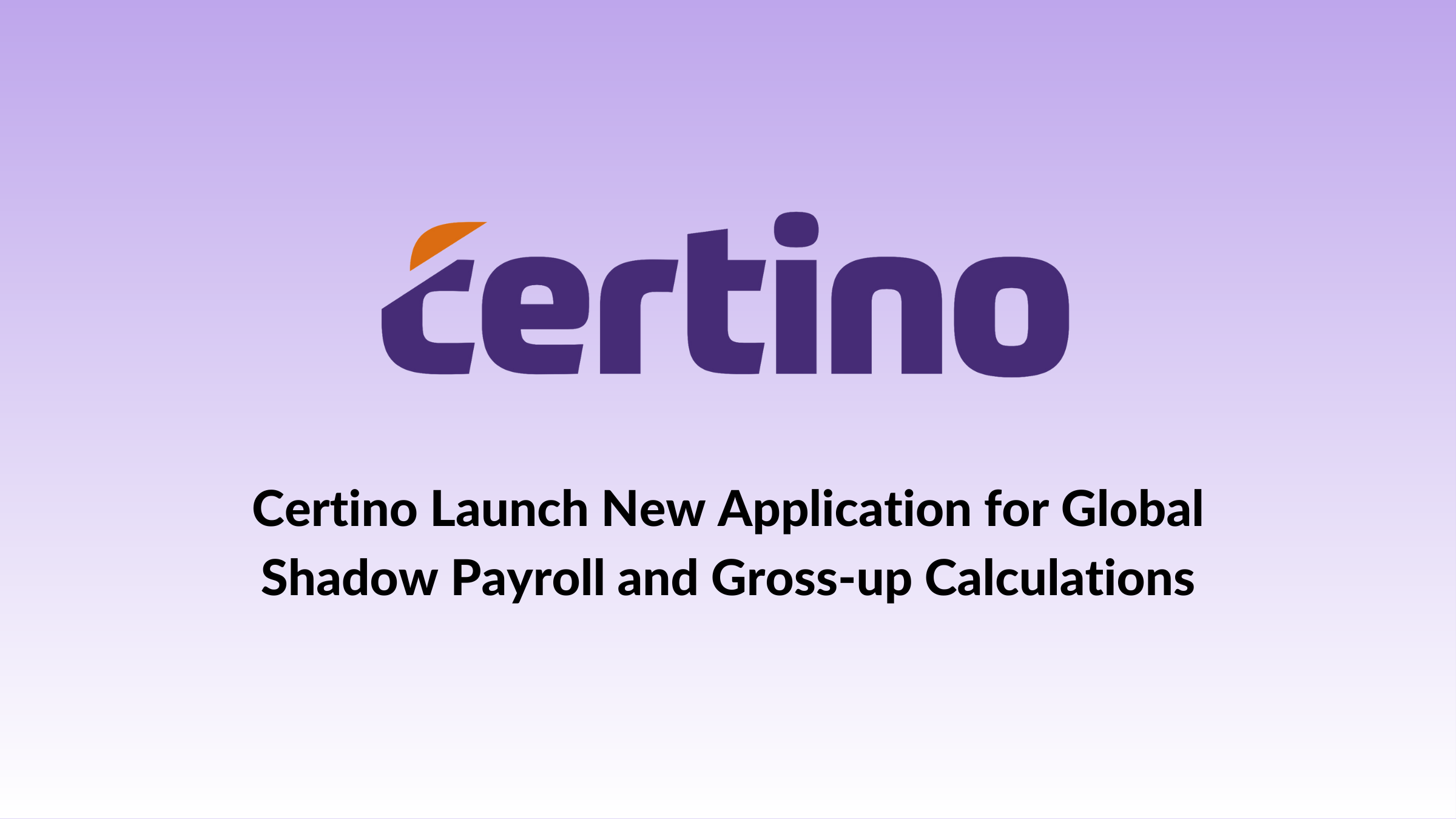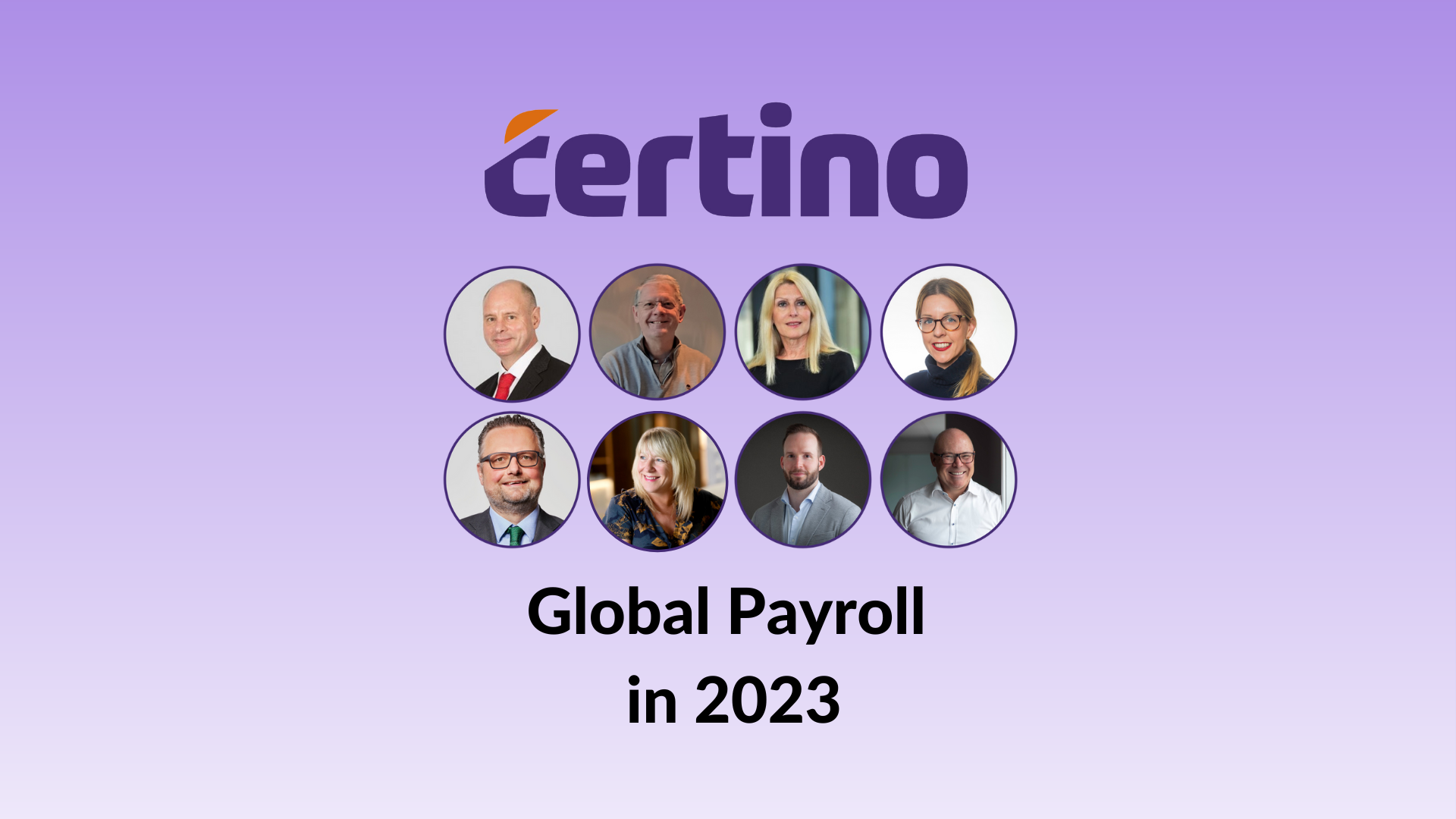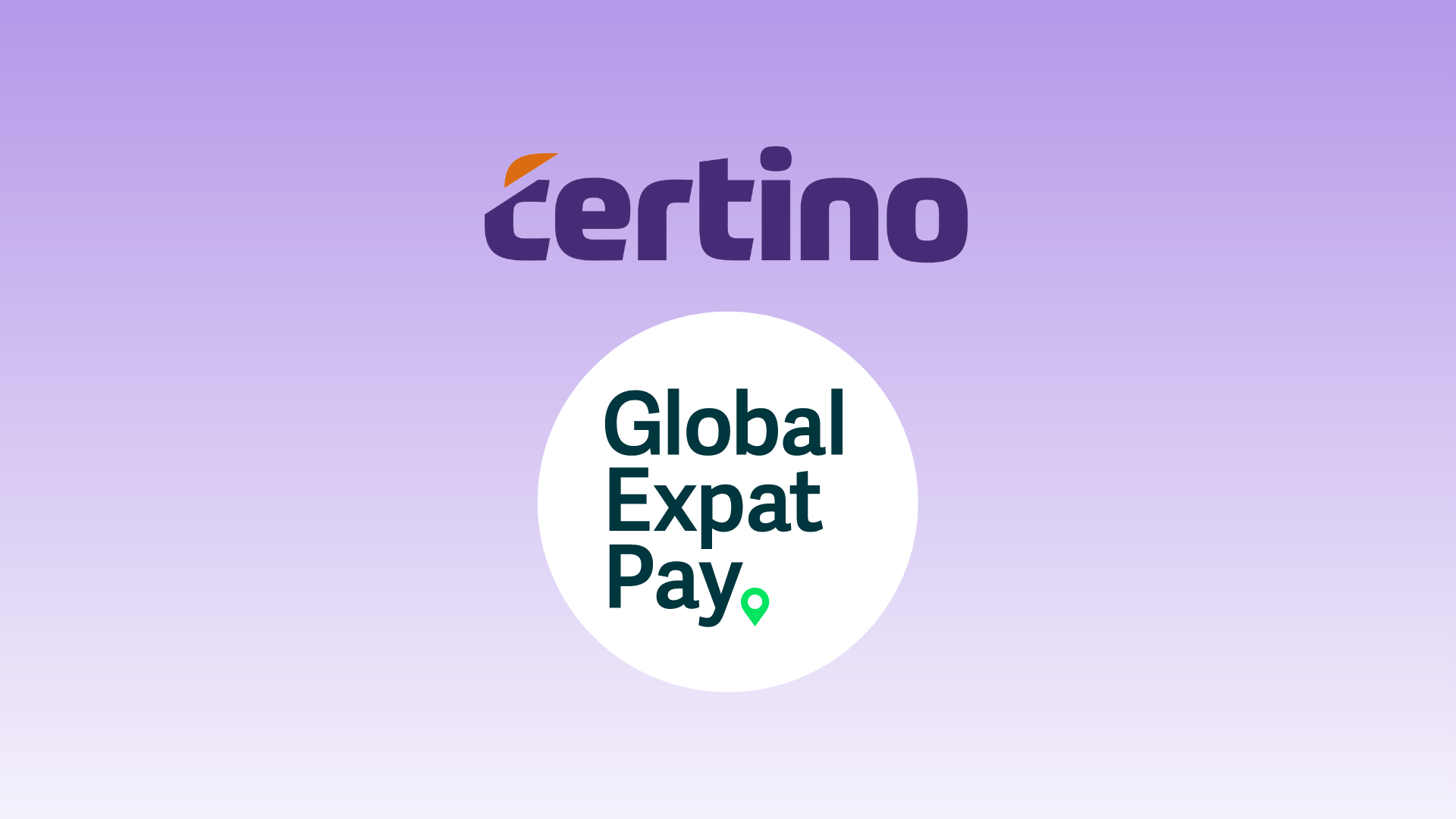The definitive guide to shadow payroll

Shadow payroll has always been complex. Instances where it becomes a requirement are increasing. Not only is a greater percentage of today’s workforce adapting to more flexible working patterns with respect to working across borders, but host countries and tax authorities are becoming increasingly more demanding.
There are many elements that need to come together to ensure that your shadow payroll is filed timely and accurately:
- Upstream, the retrieval of data from multiple sources can be difficult , be it your HR system, home payrolls or locally paid at host, a relocation provider, or an external source, and issues could arise from data gaps and human/processing errors.
- The payroll calculation can be complex for mobile employees, especially when gross ups of tax are involved.
- Downstream, reporting and paying timely may be delayed or managed sub-optimally.
That’s why many companies are now looking to implement a robust global shadow payroll framework using automation to streamline the process and increase compliance.
If you want to learn about implementing a good shadow payroll process, you’ve come to the right place.
In this guide, we’ll walk you through the concept of shadow payroll, and give you a high-level understanding of when it is required. We will explain the main compliance challenges, demonstrate the differences between manual and automated approaches, and provide examples of what a good shadow payroll process looks like.
Shortcuts:
A shadow payroll is a payroll that doesn’t physically pay the employee, rather it’s a mechanism that allows the employer to meet their local payroll tax payments and reporting obligations by replicating or “shadowing” the home payroll compensation reporting.
Shadow payroll is therefore a method of calculating the appropriate tax and social security liabilities (in the host location) to be submitted to the host country authorities – while the employee continues to be paid from the home country payroll.
Essentially, the business entity or the payroll provider in the host country is required to “shadow” report all the payments and benefits that are paid in the home country. This also includes any other payments paid through relocation providers and/or paid directly in the host country.
The description may sound simple enough, but it comes with its share of challenges. It can be a complex process, which requires detailed knowledge and expertise making it crucial that companies are aware of any shadow payroll requirements when employees travel overseas – whether on a short or long-term basis.
Learn more about what shadow payroll is and exactly when it’s required >>
When might a shadow payroll requirement arise?
While shadow payroll is most often used to manage assignees on long-and short-term assignments, shadow payroll processes can go much further. It can also cover; business travellers, project workers, and situations when employees require more flexibility in their work life – such as commuters, remote workers and virtual assignments.
 To define and understand all the different assignment types for when a shadow payroll requirement might arise, read our latest blog here >>
To define and understand all the different assignment types for when a shadow payroll requirement might arise, read our latest blog here >>
1. International (Traditional Assignment Types)
International long and short-term assignments
Shadow payroll for these assignment types is usually a necessity and businesses need to be certain that the host payroll receives the correct taxable income to ensure accurate and timely reporting.
2. International Business Travel
Project workers
Project workers are those employees that work on a project for a few months before moving onto the next project/location. A specific policy to cover additional tax and social security costs should be in place with employers wishing to ensure that the costing of projects is correct. The need to have accurate and timely payroll is usually seen as a business requirement. The compliance requirements of every employee should be reviewed in advance, even when bidding for the project.
Digital Nomads
Digital Nomads are employees who tend not to remain in one location for long and could work in several countries throughout the year. These employees are unlikely to be a resident in any particular country and as such, tax treaties would not apply as a general rule. This leads to the possibility that a payroll requirement may be required in each of those countries.
Short-term Business Travellers
This group of travellers may not be under the umbrella of the Global Mobility departments and separate processes need to be put in place to ensure immigration, social security and tax are reviewed on an ongoing basis for all, or at least some travel corridors, especially for senior employees.
3. International Flexible Work Arrangements
Remote working
There is now a trend to implement HR policies to accommodate requests for remote working away from the office. Flexible working is here to stay. While the safety and wellbeing of employees remains key, care should be taken to not cause compliance issues for the company and the employee. It is possible that remote working could cause a tax burden for the individual in the working location if overseas, not to mention any corporate implications that may also arise.
Virtual assignments
Care should be taken with such arrangements with respect to tax compliance, and while the employee will mainly work in and be paid by the home location, the duties in the host location and the cross-charging of the employee costs may lead to compliance requirements both from a payroll and company perspective in the host location.
Commuters
If individuals continue to work wholly or in part from their home in the future (away from their normal place of work), consideration should be given to whether a tax liability arises in their resident location and any payroll or reporting that may be necessary in the home as well as the host country.

Global Mobility teams that have an end-to-end global view of shadow payroll with automated processes in place will demonstrate the most adaptive and compliant solutions to the workforce planning questions of the future.
Keeping up with shadow payroll compliance
As we've outlined above, each shadow payroll requirement, such as compliance related to long and short-term business travel, can create its own variety of tax issues that can be difficult for companies to manage.
In addition, tax considerations are often intertwined with other matters such as corporate compliance, mobility policies, and a lack of proper processes—all of which can create unexpected challenges.
Global requirements are changing rapidly
The global regulatory environment continues to rapidly evolve. Legislative and regulatory changes and their enforcement are generating tax and other compliance challenges and risks that must be properly assessed and their impact reviewed.

What’s more, there is now greater cooperation across countries in sharing information. Tax authorities and border forces are working together more in many countries, so the incidences of review and audit may increase.
Overlooking compliance issues could lead to financial and reputational risks and exposures, potentially putting projects and future business at risk.
The focus of governments and tax authorities on ensuring companies and individuals pay their fair share of tax in a timely manner, continues to be under scrutiny.
Actions to consider
Before launching assignees into a new country, companies need to ensure that all the corporate consequences are reviewed, and solutions put in place to enable tax, business, and other compliance needs.
Companies may structure their mobile workers in specific jurisdictions so that they do not trigger individual tax liabilities. Unfortunately, if the employee activity creates a Permanent Establishment (PE) for corporate tax purposes, this could mean individual tax liabilities are required as well as any corporate tax compliance needed.
That’s why we recommend that the process starts with asking a variety of questions, such as:
Permanent Establishment (PE)
- Will the presence of the employee cause a Permanent Establishment (PE) issue for the home employer in the host location?
- Will the duties of the employee in the host location increase the PE risk?
Corporate Compliance
- Are there any consequences to be considered in respect of transfer pricing such as the cross-charging of costs between the home and host entities?
Administration and Registrations
- Will the host payroll be able to administer payroll on behalf of the home entity?
- If not, what are the procedures to run a shadow payroll?
- If shadow payroll is not necessary, how are taxes paid e.g., with tax return, by installments or monthly payments by assignee?
- Does the home entity need to be registered as an employer in the host entity?
Once all the country due diligence is complete and a structure is in place to overcome any initial obstacles, a shadow payroll can be set up. Next steps and review of the following may be required;
Registrations
- Note that registrations for the employee may be necessary
- Will they need a tax identification number?
- Will local registrations with the local authority e.g., Town Hall be necessary?
- If a tax card e.g., Denmark or coding notice e.g., UK is required for payroll processing, make sure these are available from employee on receipt
Social Security
- Has the A1 or Certificate of Coverage been put in place, where possible?
- Do the conditions of the Reciprocal agreement eliminate all host country social security taxes or only certain taxes e.g., India to France, only the element relating to pension is excluded, all other social taxes in France are payable?
- Is a separate registration required for social security?
- Is a social security number required?
Residency
- What is the residency status of the employee as this may determine how the employee will be taxed in the host country e.g., graduated v flat rates of tax?
- Will a tax treaty apply for that employee? (Tax treaties may exempt the income from tax providing all treaty conditions are met but social security may still be due).
- Does an economic employer rule or local legislation based on employee role or circumstances apply, which may override the tax treaty?
- Travel pre assignment (and the work permit) may also have an impact on what earnings may be taxed and on residency status
Tax Positions
- Have all tax reliefs and expat regimes been claimed timely e.g., in the Netherlands a ruling to exempt 30% of earnings may be available?
- Are tax positions at a company and an employee level discussed and agreed e.g., claiming allowances for family?
These questions are not exhaustive and each country will have different questions to consider. Other key areas to consider which are not covered in this overview include immigration, local employment law, health insurance outside of social taxes etc.
To read more about simplifying international employment tax compliance, read our latest article >>

This is where technology needs to do the heavy lifting. It takes the burden off global mobility teams with robust, efficient, consistent and compliant processes.
How to reduce underpayments and overpayments
There’s a lot of moving pieces when it comes to calculating international employment tax for shadow payroll – from a lack of specialist tax experts in the host country payroll teams, knowing whether something is taxable or not, to differences in how tax is calculated in different countries.
There are major differences in expat regimes through payroll and what needs to be claimed back (including special deductions and allowances). This also includes what tax positions are in place and what local payroll instructions look like in such circumstances.
Tax positions enable best practice in the production of shadow payroll calculations by applying the correct tax treatment depending on the employee’s facts, circumstances and wage payments in each host country. This allows for tax planning through payroll where possible, and ensures accuracy month-on-month.
With all this in mind, and while it’s far from ideal, it’s common for companies to accept that they’re going to have to overpay. This can make it a highly inefficient and costly process to run a shadow payroll with possible knock on effects.
If you’ve not planned in costs for employment taxes when you’re sending someone to work in a certain location, it could cause your project to go over budget – and significantly so, because the tax piece is often a very high percentage of the overall cost of the assignment. When costing the income taxes plus the social and payroll taxes, depending on which country it can be upwards of 50 to 100% in addition to the compensation package.
When companies don’t get it right each month, at the end of the year when an assignee files a tax return (because they didn’t include an employee on shadow payroll or shadow payroll is underestimated), the business gets hit with huge and unexpected costs – instead of it being spread out throughout the year and planning for in budgets.
9 ways to reduce shadow payroll employment tax overpayments and underpayments
1. Review the end-to-end process
Ensure the process is identifying those that require shadow payroll, review the host and home shadow payroll process, and ensure accurate collection of data and full compliance in the relevant countries.
2. Review the accuracy of reporting
Each entity with a payroll requirement for employees paid by another entity should make certain they have reliable, up-to-date data sources ready for accurate real-time reporting as soon as possible to ensure they can meet the appropriate filing deadlines. If some or all of the compensation reported is to be grossed up, these should also be performed through the payroll process, depending on the facts and circumstances of each employee.
3. Develop a global policy or group of policies
By developing a standard approach that incorporates forward planning when travel assignments are imminent, it allows action to be taken wherever cross-border assignments arise. If the issues are only identified as they arise, it can be costly and too late to fix retrospectively at that point.
4. Plan and prepare tax positions
Forward plan and prepare any tax positions that may be required in the home or host country, such as ensuring expat rulings are in place, certificates of coverage /A1 are applied for and available, or identify any matters which may be relevant in the host country, for example, economic employer rules.
5. Liaise with other relevant departments
Such as Corporate Tax to ensure that the presence of an employee in the host location will not cause tax or transfer pricing issues. This is also essential to ensure any rebilling matches the payroll reporting and all processes are joined up across the organisation.
6. Proactively react to changing regulatory demands
By working internally and/ with your advisors by accessing relevant payroll and mobility data across the globe to ensure payroll calculations are accurate.
7. Track employee travel for reporting purposes
This will provide visibility of who is traveling, and to which locations. A view will then be needed as to whether reporting is required in that location either through a rules-based system per country, or advice from your advisors.
8. Timely filing in the host and home locations
‘Getting It Right First Time’ through the effective planning, deployment, and tracking of employees for Shadow Payroll as they move from country to country allows you to avoid large under and overpayments at tax return time.
9. Consolidate all information in one place
Create a centralised, consistent and standardised process. Given there may be drawbacks with this due to data protection or the company structure, a global solution with restrictions at an entity or regional level would still provide the consistency and accuracy required.
You can read more about how to reduce international employment tax compliance in this comprehensive article >>

There’s an abundance of technology solutions for global mobility available at the moment from relocation tools to tracking compensation and assignments management, but so many of them are not joined up.
An end-to-end automated shadow payroll approach should slot in seamlessly with those tools as necessary such as global tracking and compensation gathering tools, or even replace or supplement such tools. In conclusion, there are many operational and cost-saving benefits.
Manual vs automated shadow payroll
It’s fair to say that shadow payroll can be one of the most time-consuming and costly global mobility business processes. That’s why making sure shadow payroll is as efficient as possible is crucial, especially for companies that handle a large volume of globally mobile employees.
Automated systems will ensure timely delivery, accuracy, and reliability. They eliminate the need for unnecessary human intervention and provide consistent results, and excellent cost-savings.
If this makes you wonder how or why automated shadow payroll processes are an improvement over manual processes; let’s take you through a comparison.
Manual shadow payroll
Manual shadow payroll is clearly a lengthy process as many of the steps must be managed with a lot of human effort. It’s prone to bottlenecks, and involves a lot of coordination, deadlines, verification, and approvals, which means the scope for human error is huge. With data not up-to-date or available in real-time, reports won’t be available immediately either. What’s more, this approach cannot easily increase in scale to support a more globally active workforce.
From disparate data in siloed systems to barriers to integrating data in a meaningful way, there can be many reasons why companies still grapple with a manual approach.
Manual shadow payroll might still be a viable option for only a very small volume of globally mobile employees to process. However, if quality and risk compliance are of paramount importance to your company, it might make sense to look for an alternative.
Automated shadow payroll
An automated shadow payroll process, on the other hand, uses a specialised shadow payroll platform. This type of platform can automate almost all the steps of the shadow payroll process and requires only minimal human intervention. It ensures efficiency and eliminates effort.
You can flexibly adapt and scale to changing needs, provide 24-hour service availability, comply with all legal requirements, and free up time using shadow payroll software tailored specifically for your business needs.
No bottlenecks, no data issues, and no struggling to get something working with other software or a particular country’s tax system. Just shadow payroll that works.
This simple, secure, and highly efficient automated shadow payroll system can operate in a consistent way around the clock handling complex calculations, considering all relevant local rules and legislations. It is not limited by normal human constraints such as local tax knowledge or time zones.
It can also assist quality control by providing data visibility, BI reports, having extra validation or generating a system log for internal review and audits.
Learn more about manual vs automated shadow payroll >>
The potential of shadow payroll automation
An automated shadow payroll system can help save two of your company’s most critical resources – time and money. Even when your company has a low number of globally mobile employees, manual shadow payroll processes can create a mass of unstructured data and lead to errors in calculations and tax filings. The problem only increases as your business grows.
Building a business case for automated shadow payroll

If you’re involved in shadow payroll and you want to introduce an automated solution, you might be personally convinced that it will create significant benefits for you and your team: more streamlined processes, better visibility, and controls into the execution of your shadow payroll processes, improved fulfilment of compliance obligations, easier and faster generation of required management reports.
But rolling out a global shadow payroll solution requires time and effort. How do you convince management that an automated solution is worth the investment and effort?
Creating a compelling business case will be important to make the argument for a shadow payroll transformation project to your management and to get support from key decision-makers.
So how do you build a strong business case for a shadow payroll solution? There are a number of different benefits to include.
Ensure your business case considers the below benefits;
- Compliance – Identify your current risk vs. any risk with automated shadow payroll.
- Operational – Note any efficiencies and talent impact.
- Financial benefit – Comparing costs and time saved.
- Other efficiencies as associated benefits – Flag here things such as better compensation data, reduced KPI failure, increased morale etc.
- Transparency of costs and knock-on effects to other areas of business e.g. transfer pricing, costing of projects.
- Potential ongoing cost savings through efficiency and filing of correct payroll reporting.
Finally, it’s key to ensure your business case is led and presented by a senior internal stakeholder.
A good shadow payroll process is much more than a tool to improve process efficiencies. It can help manage your company’s most valuable resources: talent, time and money.
Shadow payroll maturity model
Benchmark your shadow payroll process and learn how to optimise it.

Final thoughts
When it comes to shadow payroll, there’s certainly much to think about. That’s why companies are now turning to automating shadow payroll to simplify and streamline the entire process.
Ultimately, those companies with robust, data-rich shadow payroll processes will be in a position to benefit greatly from fast turnaround times, accurate reporting, and tax compliance. Who doesn’t want to spend less time worrying about compliance and more time actually getting things done?
Ready to simplify your shadow payroll? Learn more or Book a consultation now.


